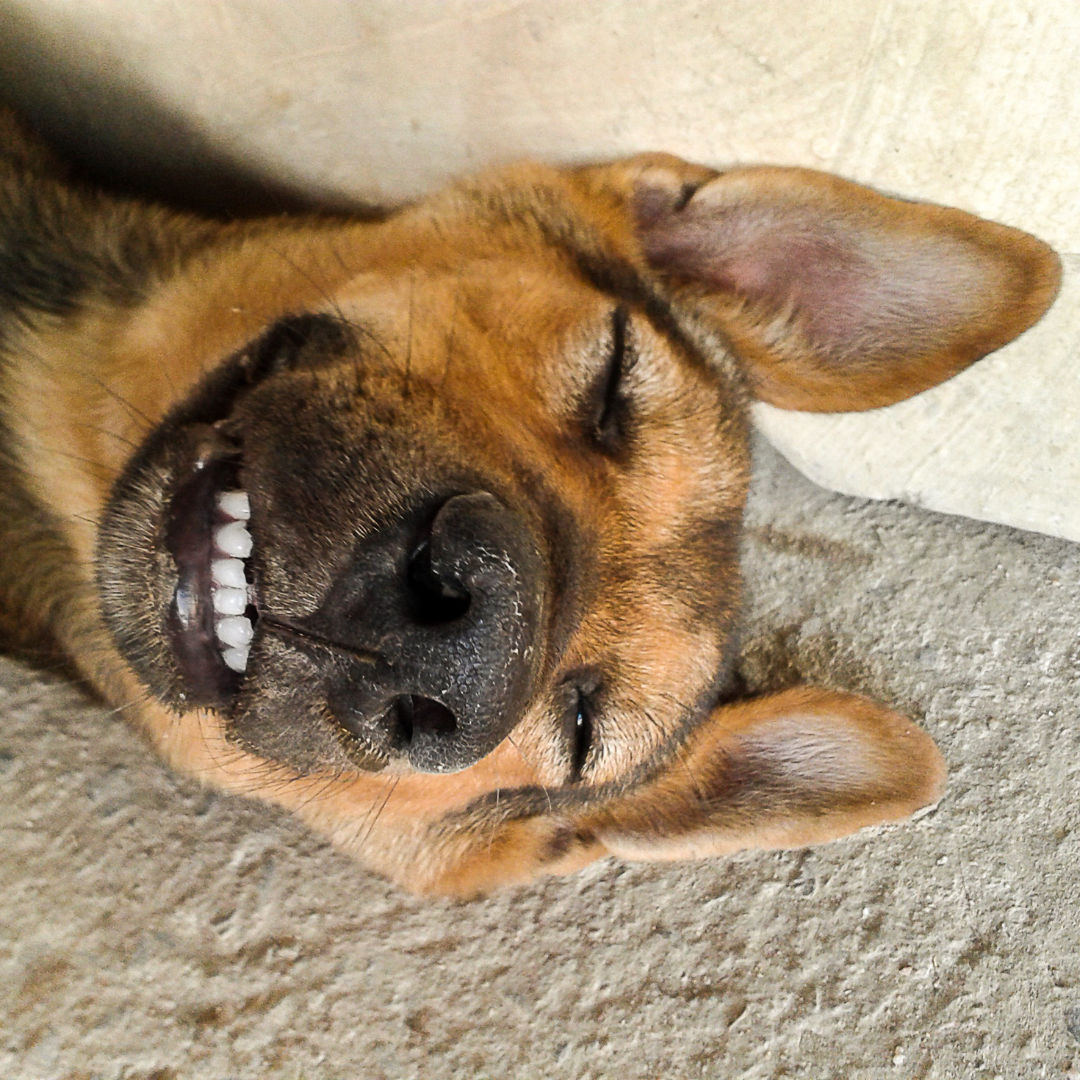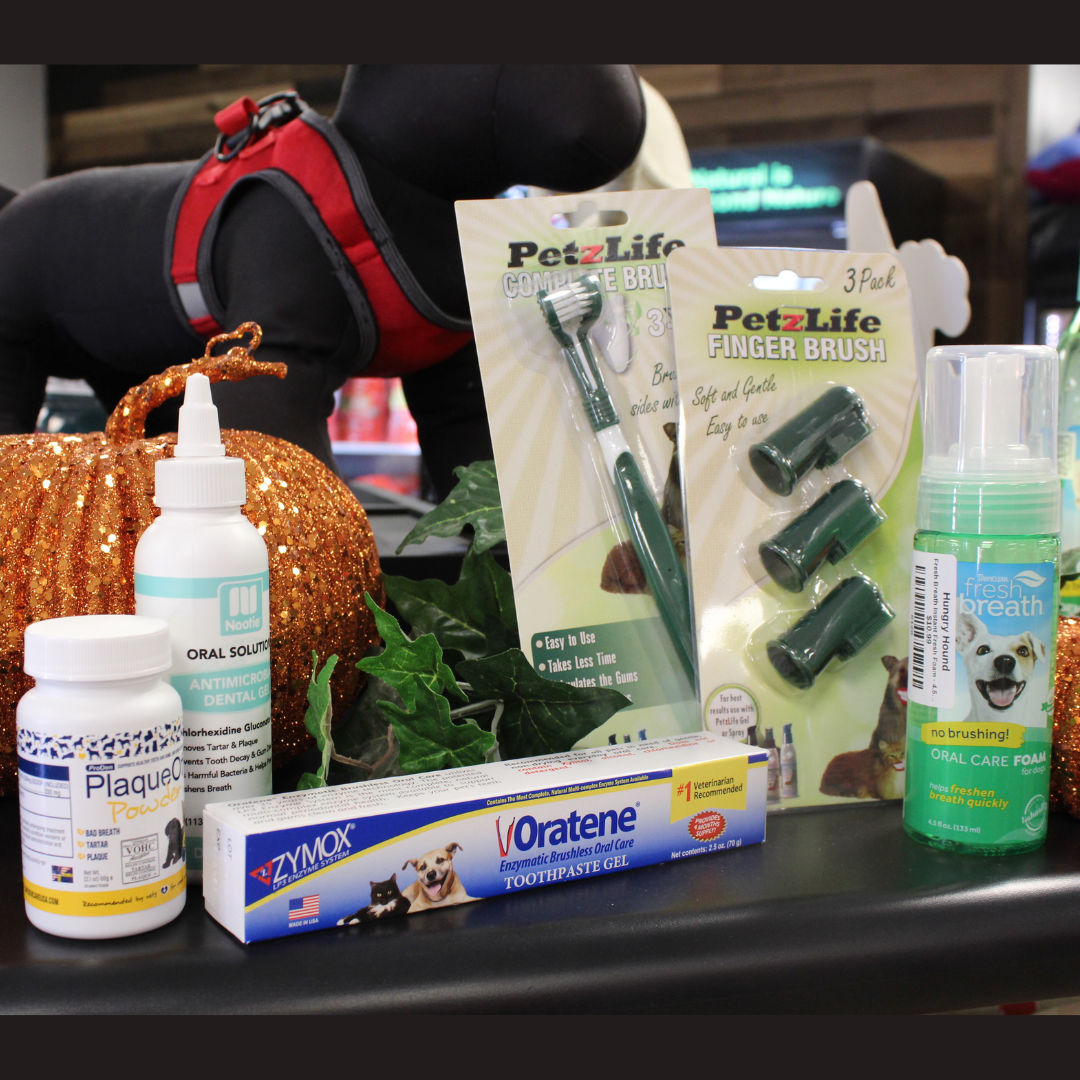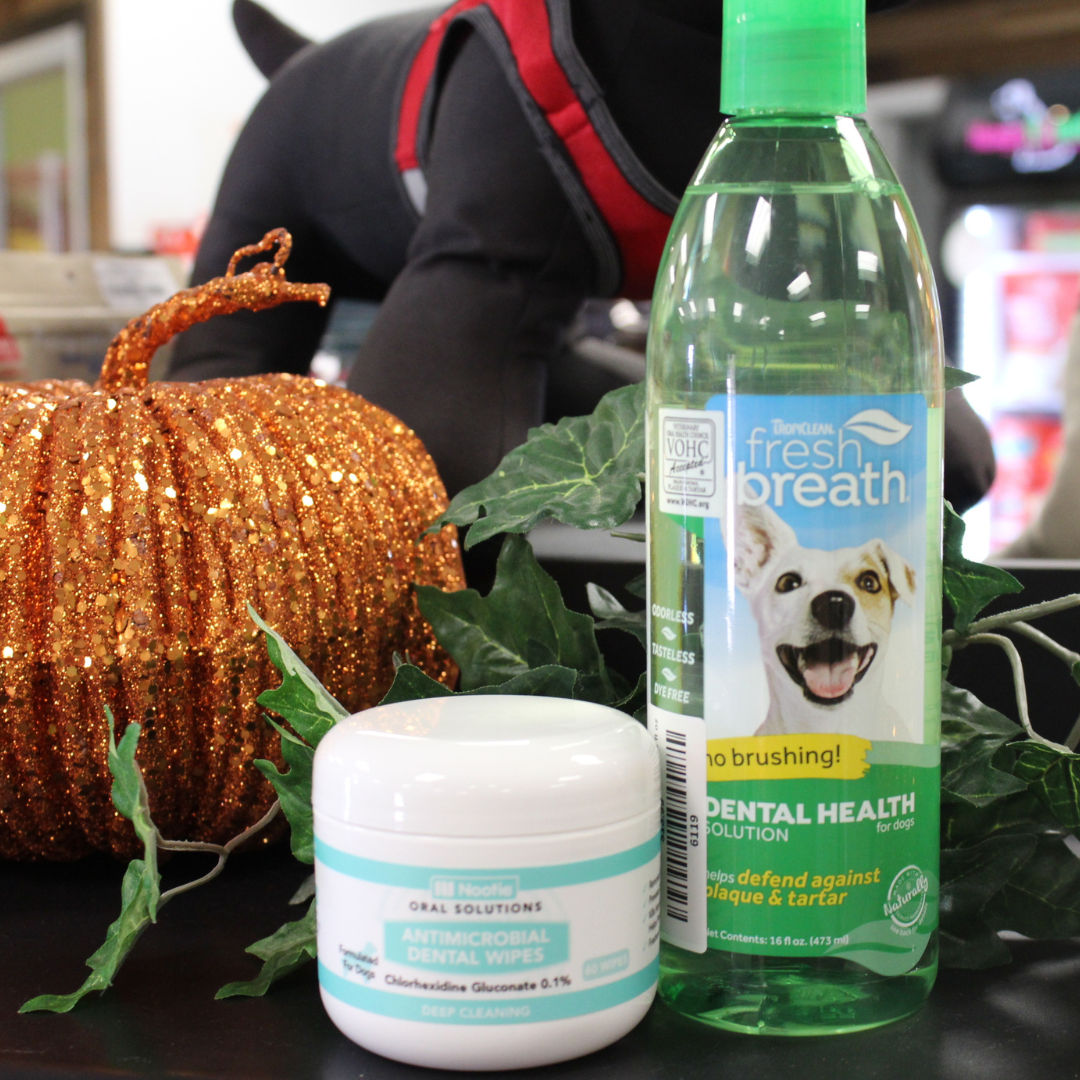October is National Dental Hygiene Month, so it’s time to talk about your dog’s teeth. I know, sore subject, right? The vet tells you to brush their teeth regularly, but who has the time? Why does it matter?
The Why
Obviously, regularly brushing your dog’s teeth is going to prevent bad breath. We’ve all been there when your pooch has come at you with a kiss, and you’re knocked back by dog breath. Regular brushing will help with that since plaque, tartar and bacteria are what cause that stink to grow.

Speaking of plaque & tartar, the longer it stays on your pup’s teeth, the more susceptible they are to losing those pearly whites! Even worse, it can cause periodontal disease and cause a lot of pain. Don’t think they’re hurting? Dogs are amazing at hiding discomfort and pain. If it gets to the point where they’re not eating, it’s bad.
And it can get worse. That bacteria can get into their blood stream and do some real damage. It can affect everything including their internal organs. That damage can be irreversible and even cause death.
So now we know why it is so important, but what about how?
The How
You really should try to do it as a daily task because their teeth are just like ours. Start when they’re a puppy if you can so they get used to it from the start. If you get a dog as an adult, it’s still not to late to introduce them to it. It may simply take a little more time to ease a weary dog into the process. Even a little brushing is better than none.
You’ll need the basics: a brush and cleaner. There are toothbrushes that look like human toothbrushes with a long handle, but some dogs are more comfortable with the rubber brushes that fit on the end of the finger. It really depends on your dog.

Use cleaners made for dogs since they will swallow them during the brushing. Human products are meant to be spit out, so do not use those. They come in many forms – paste (like we use), powders, gels, and foams. Most are meat flavored which will encourage your dog to let you put it in their mouth. Trust me, every little bit helps.
Before you start, make sure they’re in a good mood. A grouchy dog isn’t going to likely let you get near their mouth. Butter them up with some treats or choose another time if they’re in “a mood.” Let them taste the toothpaste before getting started. If they think it’s a treat, they’re going to be more receptive to it.
Then put a little on the brush. If they like the taste, they may be excited. Brush from the gums down and move quickly! Don’t open their mouth to get to the gum line. Instead roll back their lip.
Is your dog not letting it happen? There are other products to try like wipes. These are like baby wipes with the cleaner build into the material. Also, there are additives you can put in their water that can combat plaque and tartar. Neither are as good as brushing, but something is better than nothing.

Finally, don’t forget to schedule their yearly cleaning. A professional cleaning and polish can last a long time if you are maintaining their teeth in between appointments.
Remember, dental health contributes to their overall health so don’t skip the chompers!

